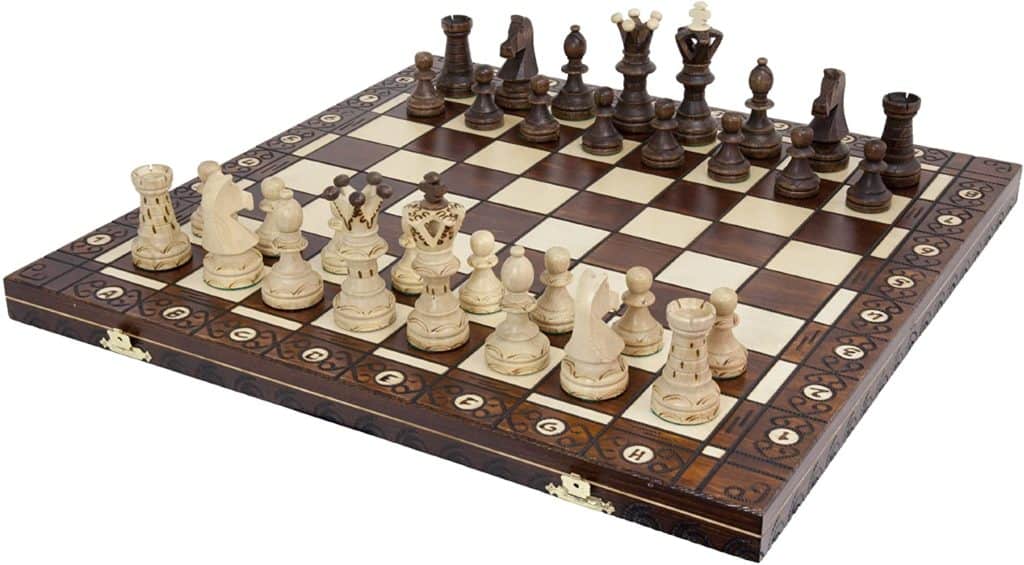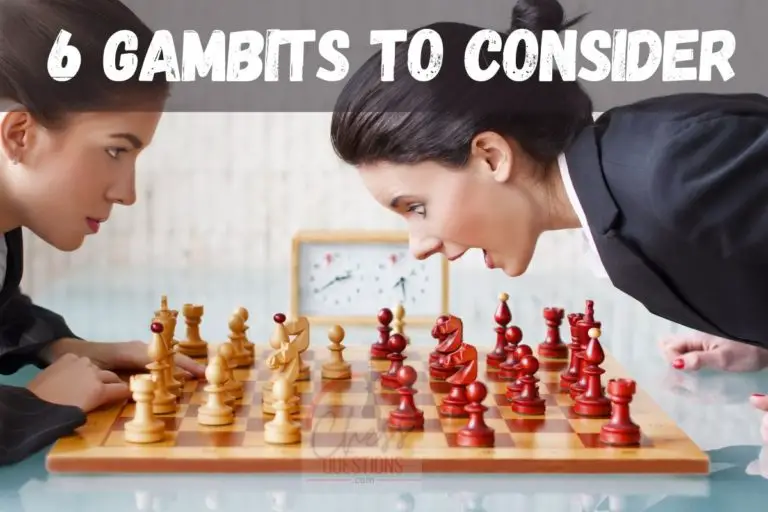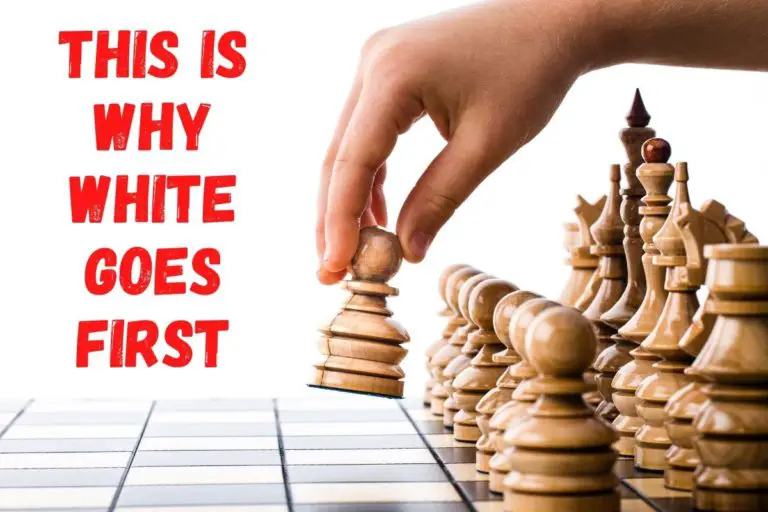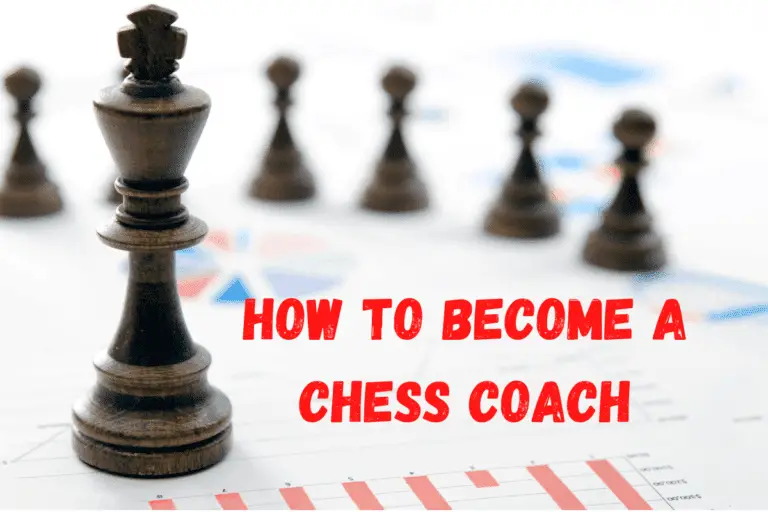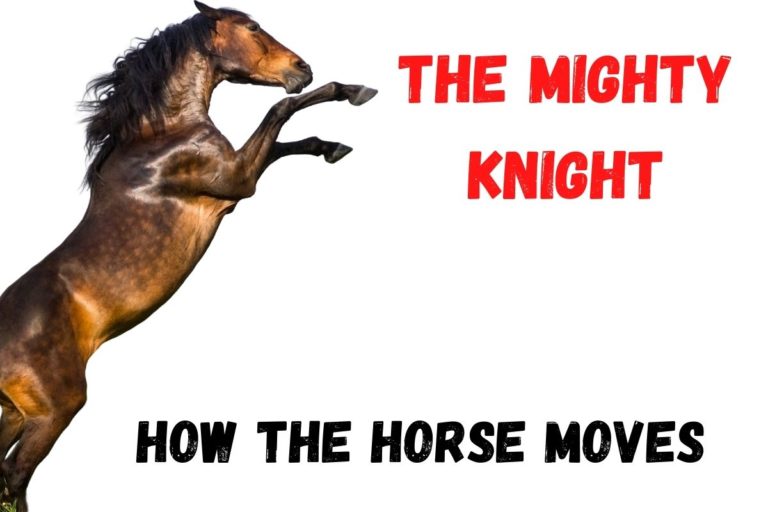6 Special Moves and Rules in Chess you Should Know
⭐⭐⭐ Take 6 minutes to read and improve your chess game ➡️ : This article was first published on, and is Copyright of Chessquestions.com
We all know that chess is a game that requires strategy, skill, and intuition. One of the most interesting parts of the game is the special moves. Though they may not be used frequently in your average chess match, these moves can give you an edge over your opponent if you learn them! In this article, we’ll explore some of these special moves with chess pieces and rules with links to more detailed information on our website for those who want to learn more about them.
Let’s start with a list of the 3 Special moves in Chess and how often we might expect to see them happen in games, beyond the basic movements.
These are the three main special moves in chess that are outside the normal move abilities of each piece. Castling is the most popular followed by Pawn promotion and En passant which are far rarer an occurrence.
| Move | GM Level | Novice Level |
|---|---|---|
| Castling | 88% | 60% |
| Pawn Promotion | 2% | 7.5% |
| En-Passant | 1% | Negligible |
You can see how the frequency of use of these moves changes depending on the skill level of the player. Castling is a fundamental part of a top elite players game, but can often be either forgotten or unavailable for a novice player.
Whilst pawn promotion almost never happens at the top level, the reason for which is explained below but is more popular for novices. And then there is En Passant, a strange little rule introduced after the 2 square first move rule was introduced for pawns, which is barely ever used at all.
Learn Chess From the Best at a Price you Can Afford
Do you want to be a chess grandmaster?
Even if you don’t have the talent to become the next Garry Kasparov, you can still dramatically improve your chess skills and rating by learning from the Grandmaster himself in 1-2-1 Video lessons. He has over 20 courses to stream that will take you step-by-step to becoming a better player.
By following Garry’s instructions, you will see your ratings soar and be able to beat anyone who dares challenge you!
Learn more about this affordable online chess course now and get started on the path to becoming a grandmaster!
Which pieces are used for Special Moves in Chess
| Move | Pieces |
|---|---|
| Castling | King + Rook |
| Pawn Promotion | Pawn + Any other Piece |
| En Passant | Pawns |
And you thought the pawns were not a good piece. They may be the least valuable and most limited of movement (behind the King), but in fact, they are more versatile than you might have first imagined as long as you don’t blunder them.
As we see, Pawns, The King, and Rooks can be used with special moves in chess.
1. Castling
Pieces Used – King/Rook
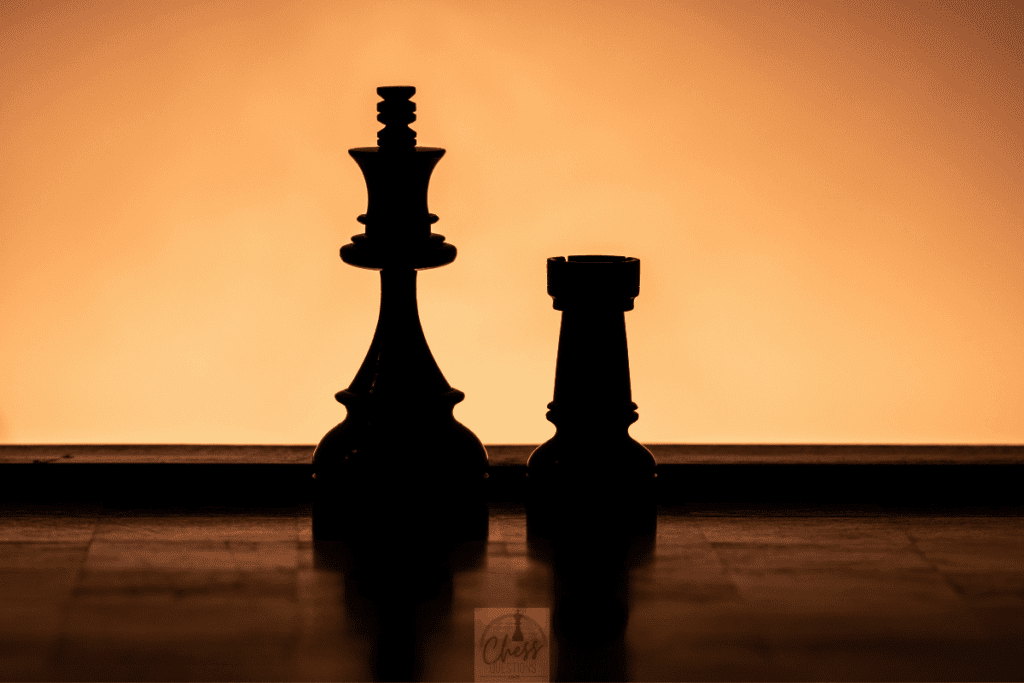
By far the most frequently used special moves used in chess by both grandmasters and novice players alike, Castling is a basic tactical move moving a king to safety and a rook out of the corner on the 1st rank from their starting position and is used on average in over 80% of all competitive chess games.
It is also an answer to the question “what chess pieces can jump?” – Often people answer with the Knight which is quite right, but the King and Rook jump squares when castling (Or does just one, whilst the other just moves? That’s a debate for another day!)
Anyway, Castling is an interesting chess rule and move you should learn in your chess studies as a beginner as it will play an integral part of your chess strategy.
2. Pawn Promotion
Pieces Used – Pawn + Any Other Piece
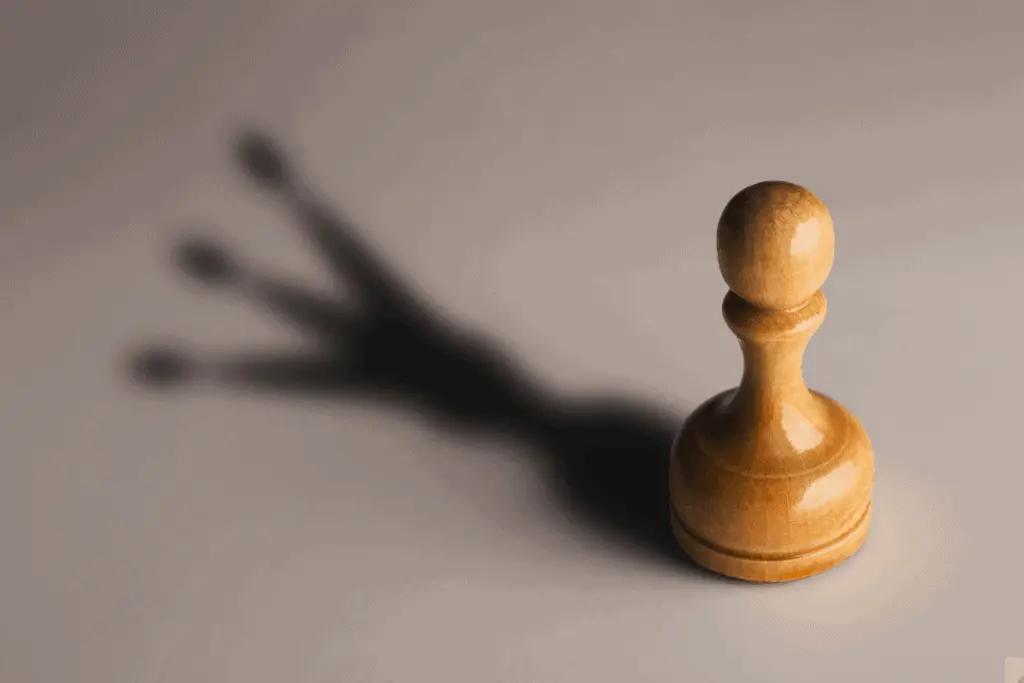
Pawn promotion is a special move that provides the opportunity of a reward of an exchange of a pawn that reaches the 8th rank on the board, to any other piece of the player’s choice. In almost all cases, the Queen is the chose piece, which is why you may often see extra queens in chess sets.
However, as chess ability increases you will see fewer and fewer examples of pawn promotion within a game. Novice chess players tend to chase pawn promotion harder than a strong player, and my advice is to use it as PART of your strategy, not AS your strategy.
In chess games between top elite players, pawn promotion, or at least the unavoidable potential for it, will usually result in resignation before it happens as the players realize the game is up should the promotion take place.
3. En Passant
Pieces Used – Pawns
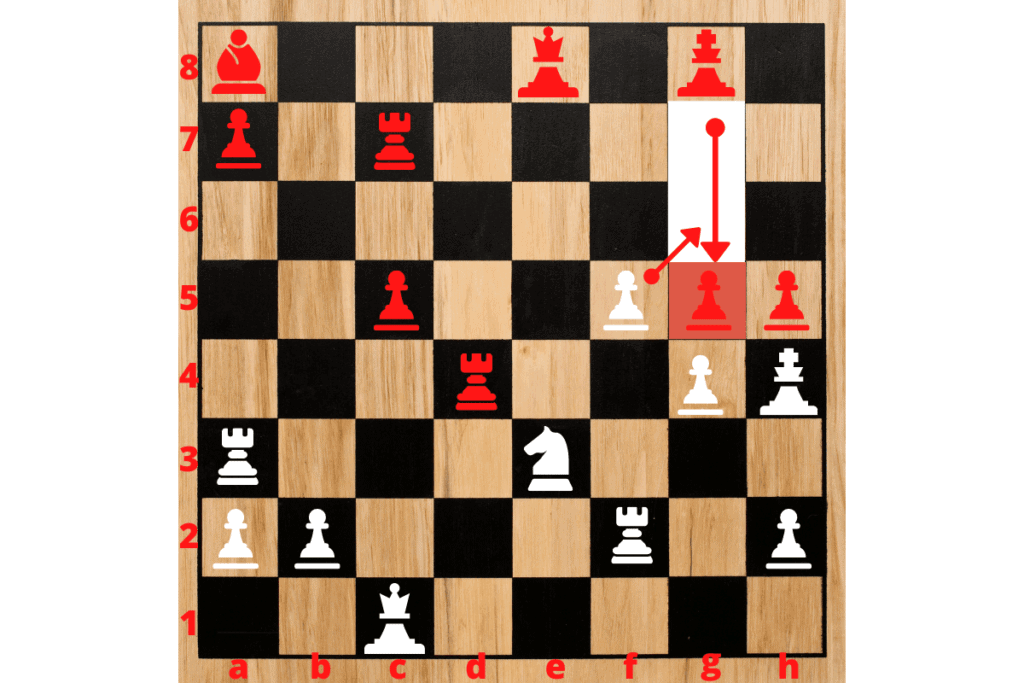
En passant is a French term for ‘in-passing’ and is a special pawn capture and one of the portfolio of pawn moves at your disposal En passant is the least used of all the moves in chess as even when you learn this move, there are three reasons why it is overlooked.
En passant involves a capturing pawn and an enemy pawn in very specific positions. See my full article which explains the move in much more detail. It is a very special rule about pawns.
- The opportunity for En Passant raises its head very rarely, and even when it does, quite often it may not be the best move available at the time of the passage of play
- The opportunity of an En Passant move is not recognized at the time. En Passant is available only on the immediate move after the opportunity arises. once it has been missed, it can not be played.
- Lots of people who even have learned how en passant works, forget what it is and to use it when available, or as above do not spot the opportunity.
What do the Queen, Bishop, and Knight have in common?
Neither the Queen, Bishop, or Knight have a special move in chess outside of the normal movement rules that they possess. They have the book rules and no more.
More Special Events or Rules in Chess
There are some other little rules of chess that may not be widely known or understood, which fall into the same type of category as the moves mentioned above. Let’s take a look at some of the more succinct rules in chess that might be considered ‘special’
Touch Move Rule
This is a rule that if you are playing friendly chess you should agree on before play begins. In tournament chess, the rule is in place and has to be adhered to.
The touch move rule is a rule that was put in place to stop players from deliberately touching a piece on the board and then not moving it. This is most likely because they are trying to make their opponent think of one move, when they know another one is coming up next.
Once you have touched a piece you have deemed that as the next piece you are going to have to move. there have been many debates, and arguments over this rule both in amateur chess and professional tournaments, and I have a complete guide to the touch-move rule you can consult for more information, examples, and detail.
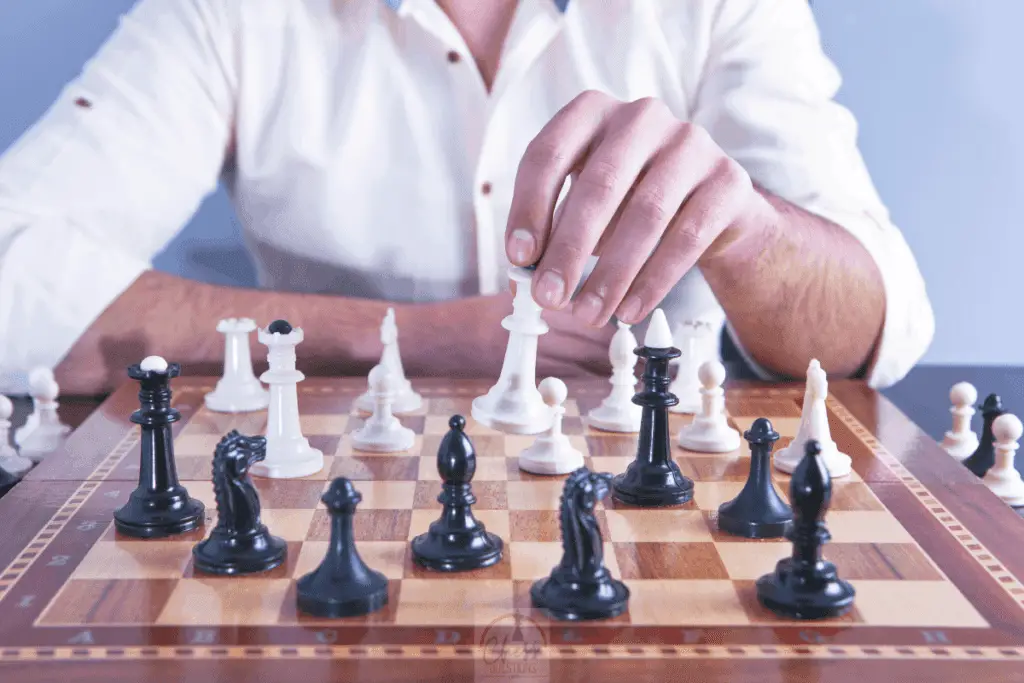
The 50 Move Rule
This is a move that is probably as rare in its execution as any rule ever written about chess.
The only time this rule might work in your favor is if you are struggling in a game with material disadvantage and need to try to play for a draw, for the rule states that if there have been 50 moves without capture or movement of a pawn you are able to claim a draw.
Whilst I do mention this is a very rare rule and it is unlikely that you will ever come across it, you might think that it is something that would be entirely non-existent in top elite chess matches. Well, you’d be wrong for it has come up, and did so in 2015 in a game between Magnus Carlsen and Veselin Topalov.
##75 Move Rule Introduced in 2016
A simple extension to the 50 move rules specifically for tournaments.
Just learn your mating patterns, and get that checkmate man!
Three Fold Repetition
In chess, three-fold repetition is a rule that governs the result of a game in which a player’s position repeats three times.
Three-fold repetition is a rule that can force a game of chess to end with a draw.
This rule is usually only applicable, (or rather noticed) in tournament chess as without using chess notation, it can be quite difficult to notice.
Quite simply, the rules state that should an exact position be repeated here times in a game a draw can be claimed – very handy if you are defending with little material and your opponent keeps putting you in check in the same position. if they do it three times, you can claim the draw quite legally regardless of their material advantage in the game.
An expert chess player can try to force this when they are looking defeat in the face and will be able to identify perhaps a lesser player who may fall for the trap.
If you think you have got yourself into a position where you can not lose, be aware of your opponent continues to play, he may be trying for three-fold repetition, which is up to you to avoid or playing for a stalemate.
TOP SPECIAL MOVE CHESS TIP:
You should make yourself familiar with these special moves in chess and little rules. Try out some chess puzzles to put them into practice, or ask your chess coach to explains them in full and test your abilities on them. they remain critical chess concepts, that whilst not widely or frequently used, should be understood, as they will come up at some point in your game.
Certainly, if you play chess engines, or use them for training purposes, you may come across these moves more frequently. I hope this article on little-known moves and special chess rules will help you on your chess journey.
Happy Chessing!
ChessQuestions.com is a participant in the Amazon Services LLC Associates Program, an affiliate advertising program designed to provide a means for sites to earn advertising fees by advertising and linking to Amazon.com, Amazon.co.uk or Amazon.ca
You Want to be a BETTER CHESS PLAYER but Don’t Know Where to Start
Everyone knows that chess is a challenging game. Even the best players in the world continue to learn and improve their skills.
Garry Kasparov’s Masterclass Chess Course is the perfect solution for you. In this course, Garry will teach you his favorite openings and advanced tactics, so that you can develop your instincts and philosophy as a chess player. With over 20 hours of video lessons, this course is guaranteed to make you a stronger player.
Alternatively, you can sign up for a Masterclass with Gary Kasparov for just $16 per month. And get access to all other masterclass courses at the same time, from Movie Making, Music recording, Cooking, and Health & Wellbeing.
Chess Set
This is a superb Wegiel Handmade European Ambassador Chess Set which is stored inside the board itself. Super high quality, it looks fantastic too
- Wooden 21 Inch Beech & Birch Board With Felt Base
- Carved Hornbeam & Sycamore Wood Chess Pieces
- Compartment Inside The Board To Store Each Piece
